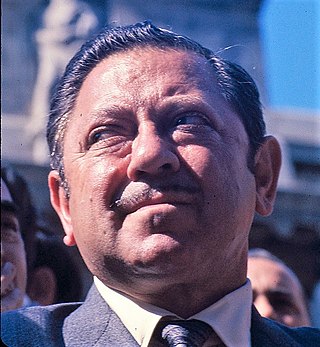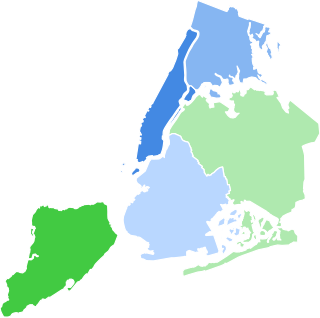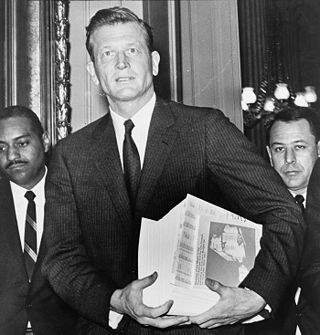1960s

During the 1960s, a gradual economic and social decay set in. A symptom of the city's waning competitiveness was the loss of both its longtime resident National League baseball teams to booming California; the Dodgers and the Giants both moved after the 1957 season. A sports void was partially filled with the formation of the Mets in 1962, who played their first two seasons at the Polo Grounds, the former home of the Giants, before moving to Shea Stadium in Queens in 1964.
The passage of the federal Immigration Act of 1965, which abolished national-origin quotas, set the stage for increased immigration from Asia, which became the basis for New York's modern Asian American community.
On November 9, 1965, New York endured a widespread power blackout along with much of eastern North America. (The city's ordeal became the subject of the 1968 film, Where Were You When the Lights Went Out? ) The postwar population shift to the suburbs resulted in the decline of textile manufacturing and other traditional industries in New York, most of which also operated in extremely outdated facilities. With the arrival of container shipping, that industry shifted to New Jersey where there was more room for it. Blue-collar neighborhoods began to deteriorate and become centers of drugs and crime. Strip clubs and other adult businesses started filling Times Square in the late 1960s.
In 1966, the US Navy decommissioned the Brooklyn Navy Yard, ending a command going back to the early 19th century. It was sold to the city. The Yard continued as a site for shipbuilding for another eleven years.

From November 23 to 26, 1966, New York City was covered by a major smog episode, filling the city's air with damaging levels of several toxic pollutants. The smog was caused by a combination of factors, including the use of coal-burning power plants, the heavy traffic on the city's roads, and the widespread use of wood-burning stoves and fireplaces. It was the third major smog in New York City, following events of similar scale in 1953 and 1963.
Mayor Lindsay
John Lindsay, a liberal Republican, was a highly visible and charismatic mayor from 1966 to 1973. The city was a national center of protest movements regarding civil rights for black citizens, opposition to the Vietnam War, and the newly emerging feminist and gay movements. There were jolting economic shocks as the postwar prosperity came to an end with many factories and entire industries shutting down. There was a population transition with hundreds of thousands of African-Americans and Puerto Ricans moving in, and an exodus of European-Americans to the suburbs. Labor unions, especially in teaching, transit, sanitation and construction, fractured over major strikes and internal racial tensions. [2]
Strikes and riots
The Transport Workers Union of America (TWU) led by Mike Quill shut down the city with a complete halt of subway and bus service on mayor John Lindsay's first day of office. As New Yorkers endured the transit strike, Lindsay remarked, "I still think it's a fun city," and walked four miles (6 km) from his hotel room to City Hall in a gesture to show it. [3] Dick Schaap, then a columnist for the New York Herald Tribune , coined and popularized the sarcastic term in an article titled Fun City. [3] [4] In the article, Schaap sardonically pointed out that it was not. [3] [4]

The transit strike was the first of many labor struggles. In 1968 the teachers' union (the United Federation of Teachers, or the UFT) went on strike over the firings of several teachers in a school in Ocean Hill and Brownsville. [5]
That same year, 1968, also saw a nine-day sanitation strike. [6] [7] Quality of life in New York reached a nadir during this strike, as mounds of garbage caught fire, and strong winds whirled the filth through the streets. [8] With the schools shut down, the police engaged in a slowdown, firefighters threatening job actions, the city awash in garbage, and racial and religious tensions breaking to the surface, Lindsay later called the last six months of 1968 "the worst of my public life." [9]
The Stonewall riots were a series of spontaneous, violent demonstrations against a police raid that took place in the early morning hours of June 28, 1969, at the Stonewall Inn, in the Greenwich Village neighborhood of New York City. They are frequently cited as the first instance in American history when people in the homosexual community fought back against a government-sponsored system that persecuted sexual minorities, and they have become the defining event that marked the start of the gay rights movement in the United States and around the world.
















